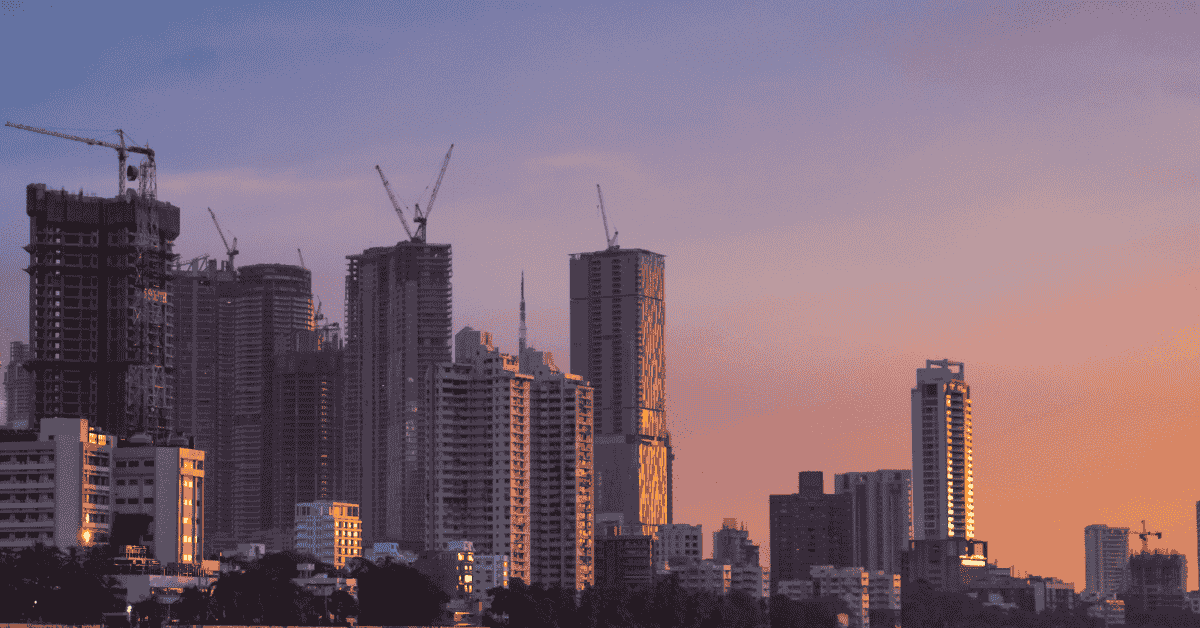Redevelopment frenzy in Mumbai a cautionary tale
Updated on IN Mumbai’s Redevelopment Boom Mumbai is currently experiencing an unprecedented redevelopment frenzy. This transformation, driven by a complex interplay of factors, is reshaping the city’s skyline and impacting the lives of millions. Old buildings, often dilapidated and struggling to meet modern safety standards, are being demolished to make way for towering skyscrapers and…

Mumbai’s Redevelopment Boom
Mumbai is currently experiencing an unprecedented redevelopment frenzy. This transformation, driven by a complex interplay of factors, is reshaping the city’s skyline and impacting the lives of millions. Old buildings, often dilapidated and struggling to meet modern safety standards, are being demolished to make way for towering skyscrapers and modern apartment complexes.
Several factors are fuelling this boom. Firstly, Mumbai’s chronic shortage of housing, coupled with a rapidly growing population, has created immense demand for new residential spaces. Secondly, the government’s policies, designed to encourage redevelopment and increase the housing stock, have incentivised developers to undertake ambitious projects. Finally, the potential for significant profits has attracted substantial investment from both domestic and international sources.
This redevelopment has led to the emergence of a new class of luxury apartments, catering to the city’s affluent residents. These modern residences offer amenities such as swimming pools, gyms, and landscaped gardens, features that were previously unimaginable in Mumbai’s older buildings. The changing landscape is a stark visual representation of Mumbai’s transformation, a city constantly striving to modernize and cater to the aspirations of its growing middle class.
However, this seemingly unstoppable redevelopment frenzy also presents a cautionary tale. The relentless pursuit of new construction raises serious concerns about the sustainability of the city’s infrastructure and the potential for social displacement. The speed and scale of the changes demand careful consideration and proactive planning to ensure that Mumbai’s growth benefits all its residents, not just a select few.
Strain on Infrastructure
The relentless pace of construction is placing immense pressure on Mumbai’s already strained infrastructure. The existing systems, designed to serve a much smaller population and a different type of urban landscape, are struggling to cope with the demands of the new developments. This strain manifests itself in several critical areas.
Water Supply Woes
One of the most immediate concerns is the city’s water supply. The new high-rise buildings, with their increased number of residents and water-intensive amenities, are significantly increasing the demand for water. The existing water pipelines and treatment plants are struggling to keep up, leading to frequent water shortages and rationing in many parts of the city. The situation is further exacerbated by leakage and inefficiencies in the distribution network, resulting in significant water wastage.
Sewerage and Waste Management Challenges
The city’s sewerage and waste management systems are also under immense pressure. The increased population density in redeveloped areas is generating a larger volume of sewage and solid waste. The existing sewage treatment plants are often operating beyond their capacity, leading to the discharge of untreated sewage into the city’s waterways. Similarly, the city’s landfills are overflowing with waste, creating environmental hazards and posing a risk to public health. The infrastructure struggles to handle the waste produced by the redevelopment frenzy.
Transportation Gridlock
Mumbai’s transportation infrastructure is already notoriously congested, and the redevelopment boom is only making matters worse. The increased number of vehicles on the road, coupled with the limited road space, is leading to traffic gridlock and longer commute times. The existing public transportation system is struggling to cope with the increased demand, forcing many residents to rely on private vehicles. The lack of adequate parking facilities in the new developments is also contributing to the problem, as vehicles spill onto the streets, further exacerbating the congestion.
Power Outages and Energy Demands
The increased demand for electricity from the new buildings is also putting a strain on the city’s power grid. Frequent power outages are becoming increasingly common, disrupting daily life and hindering economic activity. The existing power generation and distribution infrastructure is struggling to keep up with the growing demand, requiring significant investment in upgrades and expansions. This strain on infrastructure serves as a cautionary tale about the potential downsides of unchecked growth. Mumbai’s redevelopment, while promising progress, needs careful management to avoid overwhelming the city’s capacity.
Displacement and Inequality
The dark side of Mumbai’s redevelopment frenzy is the displacement and inequality it engenders. While gleaming new towers rise, many long-term residents, often from lower-income communities, are forced to leave their homes and neighbourhoods. This displacement disrupts their lives, severing social connections and undermining their economic stability. The redevelopment tale in Mumbai isn’t just about shiny new buildings; it’s also about who gets left behind.
Forced Evictions and Inadequate Compensation
A significant concern is the prevalence of forced evictions. Residents of older buildings, often lacking formal ownership documents or the resources to navigate the complex legal processes, find themselves vulnerable to eviction by developers. The compensation offered is frequently inadequate to secure alternative housing in the same area, pushing them to the city’s peripheries, far from their workplaces and support networks. This displacement effectively excludes them from the benefits of Mumbai’s economic growth.
Loss of Community and Social Fabric
Beyond the immediate impact of displacement, there’s the erosion of community and social fabric. Redevelopment projects often dismantle existing social structures, dispersing communities that have lived and worked together for generations. The loss of these social bonds can have profound psychological and economic consequences, particularly for vulnerable populations who rely on informal support networks. The vibrant tapestry of Mumbai’s diverse communities is slowly being unravelled by the redevelopment frenzy.
Widening Inequality Gap
The redevelopment projects also contribute to the widening inequality gap in Mumbai. The new luxury apartments are often unaffordable for the majority of the city’s residents, creating a stark contrast between the haves and have-nots. This spatial segregation reinforces social and economic divisions, limiting opportunities for upward mobility and perpetuating cycles of poverty. The fruits of Mumbai’s economic growth are not being shared equitably, and the redevelopment frenzy is exacerbating this disparity.
Lack of Affordable Housing Options
The problem is further compounded by the lack of affordable housing options. While the government mandates that developers include a certain percentage of affordable housing units in their projects, these are often insufficient to meet the demand. Furthermore, the definition of “affordable” is often out of sync with the realities of low-income households, making these units inaccessible to those who need them most. The absence of a comprehensive affordable housing strategy is a major failing of Mumbai’s redevelopment policies, contributing to the displacement and marginalisation of vulnerable communities. This caution is vital to ensure the redevelopment serves all of Mumbai.
